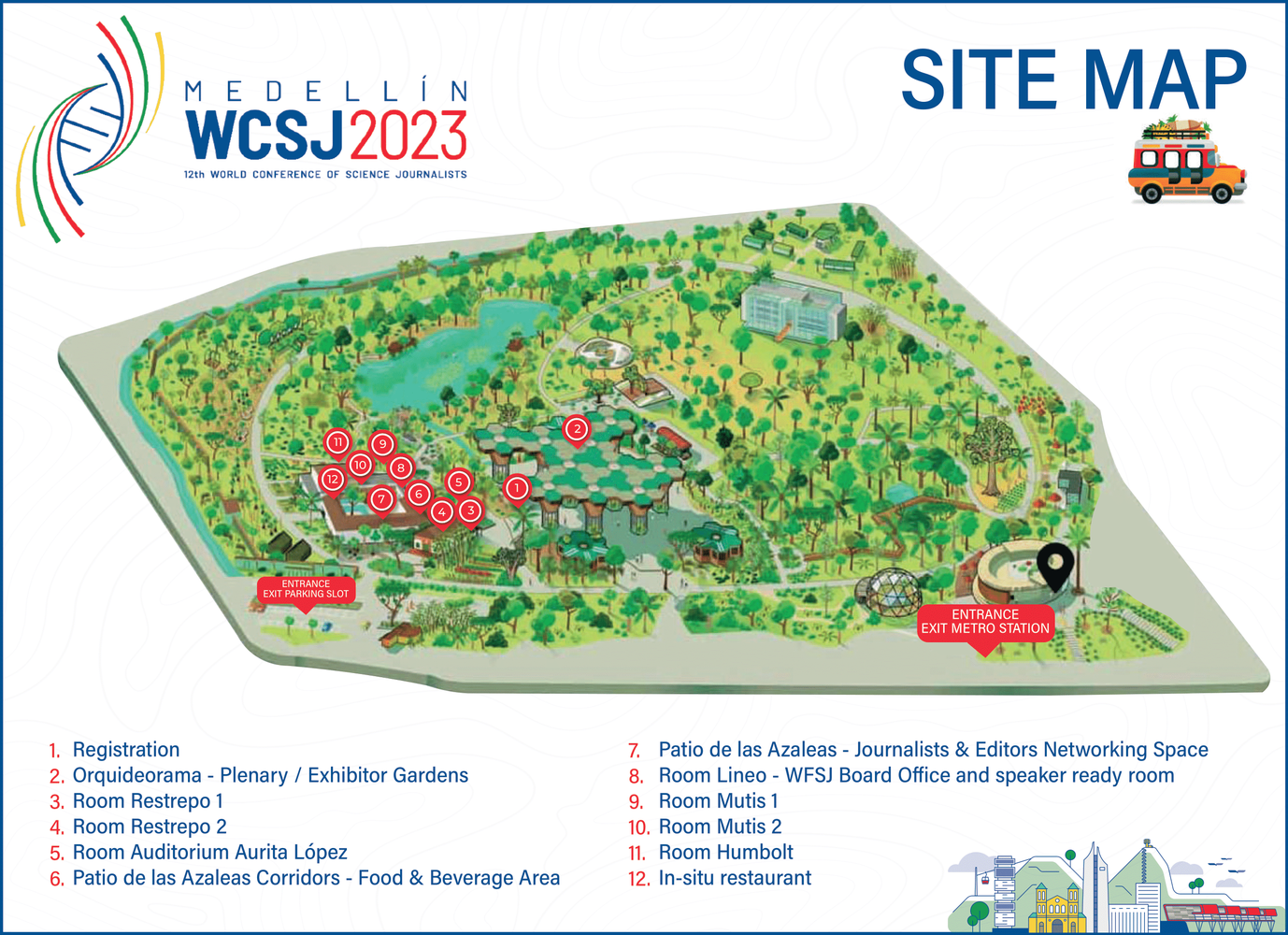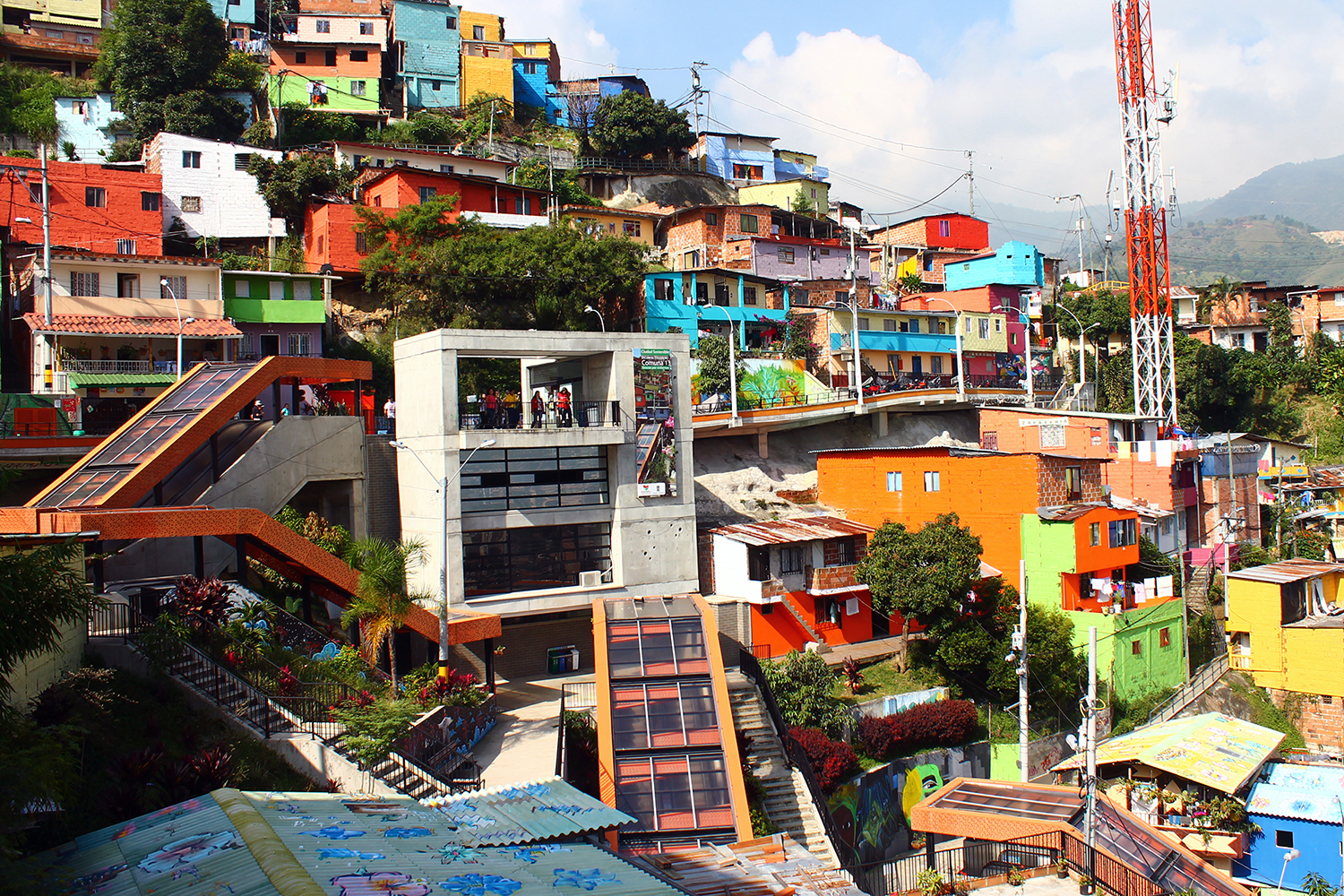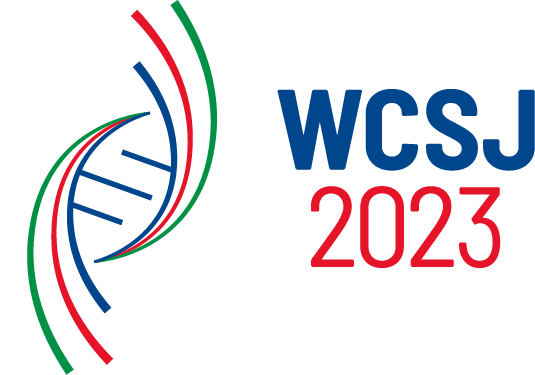Medellín and the Jardin Botanico
Known as the City of Eternal Spring, Medellín is the second largest city in Colombia. It is the capital of the region of Antioquia, which is famous for its coffee plantations, flower farms, butterflies and orchids. The city itself hosts a week-long Feria de Las Flores — flower festival — every year in August.
Despite its beauty, MedellÍín was once dubbed by Time magazine “the most dangerous city on earth”, with cartels, drug lords like Pablo Escobar and violence on the streets. It was also one of the key battlegrounds between the government and Farc, Colombia’s guerrilla movement.
In recent years Medellín has transformed, shed its violent history and is synonymous with beauty, innovation and creativity. It lies in a beautiful valley between two Andean mountain ridges and visitors can travel on a network of cable cars, soaring over the rooftops of mountainside neighborhoods.
For WCSJ 2023, our venue is the Jardin Botanico, which includes over 1,000 species of trees and plants, a lake, herbarium and of course a butterfly house: una casa de las mariposas. There is tropical rainforest, desert, bamboo, orchids and birdsong.
The Jardin Botanico began life as a family restaurant and estate, Casa de Baños en Edén, before the city acquired the land and renamed it the Bosque Centenario de la Independencia and later El Bosque — the forest. They have grown in size and become one of Medellín’s epicenters for recreation and tourism. The gardens are free except for a small charge for the butterfly house.
Botanical Garden 50th Anniversary
The Botanical Garden in Medellín is a non-profit institution whose scientific efforts are focused on nature. It is recognized for the quality of its collections and management of resources in the conservation of flora. Besides being one of the places that best represents transformation in the city, it has also played an essential role in development by proportioning areas for coexistence and civil and social inclusion. The Botanical Garden in Medellín is recognized globally as a museum and part of the International Council of Museums. As a botanical garden, they run permanent programs of basic and applied research, in situ and ex situ conservation, that is, conservation in the natural environment of the plant or outside it. Its mission is to generate, disseminate and apply scientific knowledge on the floristic diversity of Antioquia and the country in relation to the tropics, contributing to its valuation, conservation, restoration, and management to promote the sustainable and ethical use of flora and contribute to the well-being of Colombians.
Find out more: www.botanicomedellin.org

Nearby, the Esquina de las Mujeres pays tribute to notable women in the area, and the Parque Explora, an interactive science museum with South America’s largest freshwater aquarium, a planetarium, life-sized dinosaurs and four main halls: Mind, Time, Physics, and Live.
We can’t wait to show you around.
Medellin Quick facts

- Nickname: City of Eternal Spring
Language: Spanish
Population: 2.50 million in 2020
Elevation: 1,495m
Climate: Temperate, humid subtropical characteristics
Average temperatures: between 16°C to 26°C year-round
Time zone: UTC/GMT -5 hours
Currency: Colombian Peso (COP)
Click here to visit the Medellin, Colombia Tourism website.
Vat refund to foreign tourists
For all the information you need about the VAT rules regarding exemptions and reimbursements of taxes paid while in Colombia, please click here or download the following document.
Entry requirements
Before embarking on a trip around Colombia and enjoying the warm hospitality of the locals, the beauty of its landscapes and the vast cultural offerings of cities, it's important to consult the country's entry requirements first.
Visas
Citizens of certain countries need to present a tourist visa to gain entry. These can be processed at the Colombian embassies and consulates abroad. You can check if you need a visa or not in the link below.
Check countries requiring visas at https://www.cancilleria.gov.co/en/procedures_services/visa/requirements.
You can also consult Resolution 1128 of 2019: https://www.cancilleria.gov.co/sites/default/files/resolucion_1128_de_2018.pdf.
Other types of visas
Remember, other types of visas may be required for persons traveling to Colombia for reasons other than tourism. If this is your case, you can check the requirements for study visas at https://www.cancilleria.gov.co/tramites_servicios/visa/m-estudiantes.
If you're looking for a work visa, go to https://www.cancilleria.gov.co/tramites_servicios/visa/m-trabajador.
Please visit this website for further information.
Covid-19 policies
All passengers arriving in Colombia are required to register their details on the Colombian government’s CheckMig application within 24 hours prior to boarding an inbound or outbound flight.
Passengers 18 years and older arriving in Colombia by air or land must show proof of full vaccination upon arrival. If the passenger is not fully vaccinated, they can present a negative result from a PCR test taken within 72 hours of boarding or a negative result from an antigen test taken within 48 hours to boarding.
Yellow Fever
International travelers from Angola, Democratic Republic of Congo, Uganda and Brazil will be required to present the International Yellow Fever Certificate for entry into Colombia.

